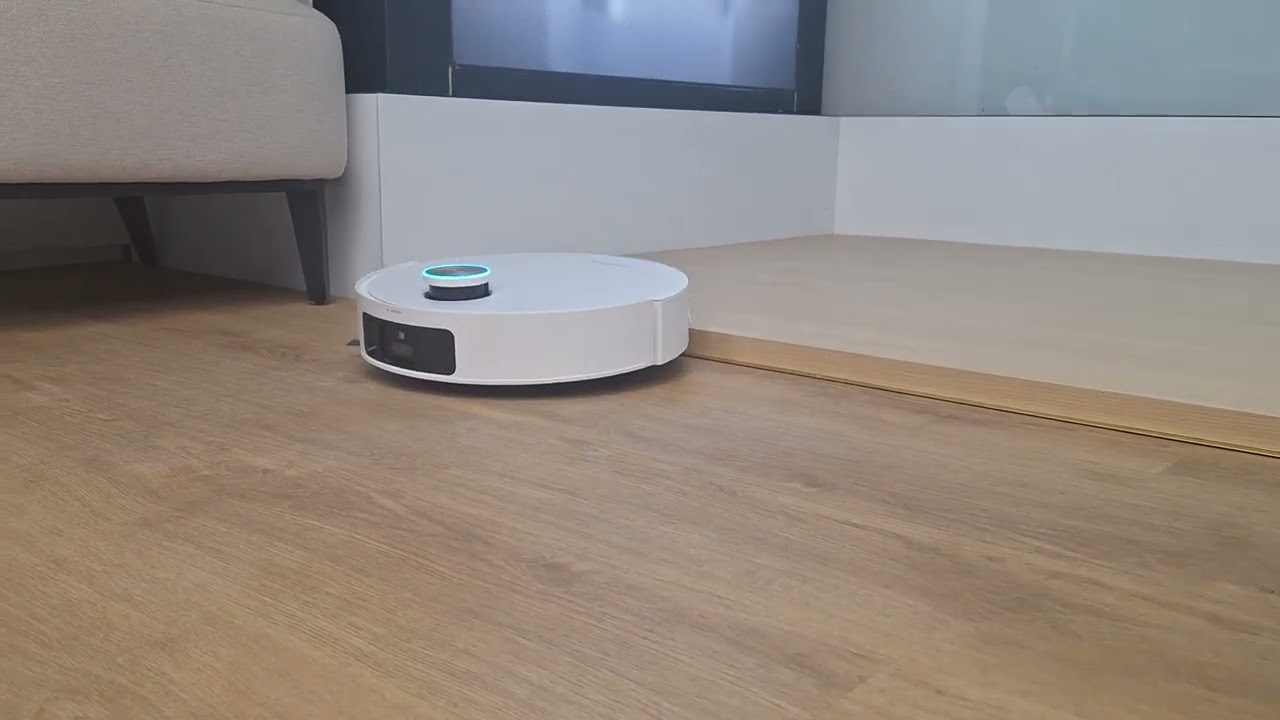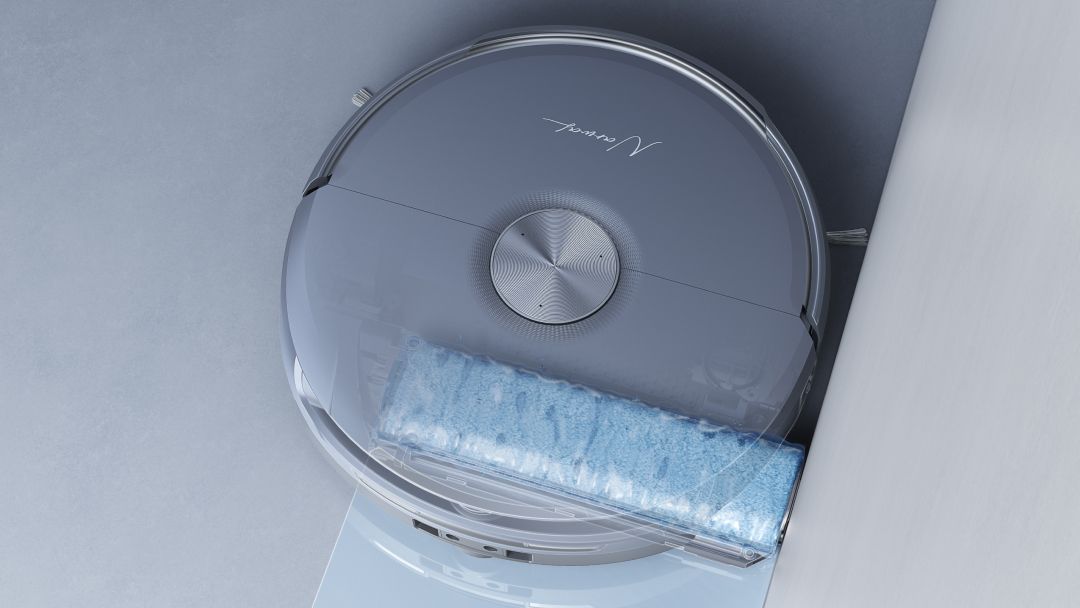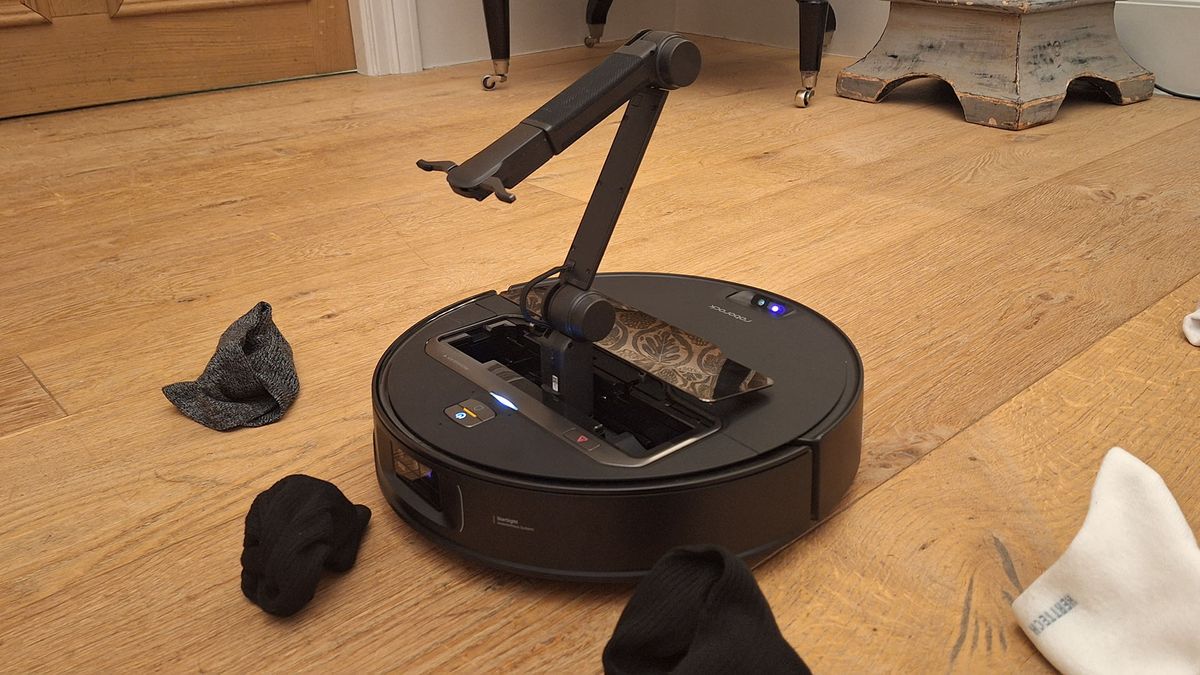CES is the launchpad for many of the biggest upcoming tech releases, but this year you’d be forgiven for thinking it’s the new stage for Robot Wars owing to the sheer volume of whacky and innovative robot vacuums roaming the trade show’s halls.
Robovac manufacturers from across the globe flocked to Las Vegas to give us the first peek at what’s to come in automated cleaning solutions, with everything from robotic arms to bunny-hopping legs making debut appearances at the show. I had the chance to see most of them in action in person, and it’s made me pretty excited – and just a little nervous – at what’s to come this year.
However, not all of these next-generation robots can win the title of the best robot vacuum we’ve tested, and in fact, I’ve got a sneaking suspicion only a few of the new flagships I’ve seen so far might fit the bill.
Watch On
Raise your hands in the air
The most obvious and attention-grabbing development has been in obstacle clearance hardware, with both Roborock and Dreame flexing their design skills by adding limbs to their upcoming robot vacuums.
First up, there’s the one-armed Roborock Saros Z70, which won our award for the Best robot vacuum at CES for its retractable robot arm which can collect items weighing up to 300g / 10.5oz (like socks and toys), and safely deposit them in an assigned area to allow for a fuller coverage clean.
Not only is the Z70 informed by its AI and obstacle detection, but there’s also a camera on the arm to help it with fine motor movements. This doubles as a secondary camera for home monitoring, allowing you to get a higher view at home by manually controlling the arm. It’s expected to launch in May or June of 2025, with no official pricing confirmed as of right now. Judging by the hardware and Roborock’s price history, expect anything upwards of $2,000 / £1,500 when it hits the market later this year.
Then there are models like the upcoming Dreame X50 Ultra, a robot vacuum with retractable legs that allow it to climb steps up to 6cm / 2-inches. While it didn’t always behave exactly as intended during CES demos, I did manage to catch it in action, and was pretty impressed by its hop-and-pivot technique (less so by the almighty ‘thunk’ as it traverses back down steps). It will go on sale in the US from February 13 for $1,699.99, and in UK from February 7 at a list price of £1,299.

Watch On
I’d be remiss to mention that really, this is an iteration on existing retractable wheel-based clearance hardware, with brands like Eureka demonstrating similar tech in its J15 model. It’s also of note that really, steps aren’t what this will be most useful for; small barriers in-between rooms, furnishings with feet that stand proud from the floor and particularly thick-pile carpets are most likely to benefit from this new clearance technology.
I’m testing the X50 Ultra out out as we speak, and am intrigued to see how well it differentiates between dangerous ledges and manageable ones on the descent – nobody wants a robovac that launches itself into the abyss.
Heads down, thumbs up
The next trend rolling out across a range of robot vacuums is retractable LiDAR (or Light Detection and Ranging) or front-mounted sensors. LiDAR is one of the ways in which robot vacuums navigate – this remote sensing technology uses laser pulses to create 3D models of its surroundings, allowing robovacs to access hard-to-reach, dark spaces like underneath furniture.
The problem? Well, many LiDAR sensors are placed on top of robot vacuums, housed in a short beacon which can add anything from an average of 0.75-1.5-inches / 2-4cm to the vacuum’s overall height. Great, except for the fact that this also limits the robovac’s access to those very same hard-to-reach places.
This year at CES, a number of robot vacuum brands demonstrated their workarounds; models like the aforementioned Dreame X50 Ultra as well as the Mova V50 Ultra and Roborock Saros 10 all sport retractable LiDAR scanners, which sink into the device when it’s time to clean underneath low-clearance obstacles. Also great, except for that this might present its own challenges in that without LiDAR, these vacuums will now have lower visibility in the very spaces LiDAR presents the most benefit.
Of course, we won’t know until we’ve tested these bots in the months ahead, but my personal feeling is that models like the Ecovacs Deebot X8 Pro Omni, which opts for embedded LiDAR sensors without a periscope, might come out on top in the long run.
Mop till you drop
If you’ve been following robot vacuum news for more than a year or so, you’ll know all about the recent boom in combination robot vacuum and mops. More and more flagship devices feature mopping tech, or at least include a combination model as part of the product range.
The issue? Well, I’ve not encountered many robot vacuums that are particularly good at mopping. Whether due to poor on-board spill and dirt detection or just that some stains need a good amount of elbow grease, most combination robot vacuum and mops are decent at best.
That could all be about to change with new mopping form factors and software, however. Models like the new Narwal Flow series at CES opt for roller mops, which could offer faster rotations, improved in-motion mop pad cleaning and better mobility for cleaning hard-to-reach areas.

The Flow’s fabric-covered roller constantly rotates, in the opposite direction to the movements of the robot. It’s soaked with clean water by its onboard water tank, while dirty water is fed into a separate, dirty water tank, meaning the robovac cleans itself on-the-go instead of once it returns to the docking station.
It offers wood floor management and edge cleaning, jutting to the side when needed, meaning you can clean all the way up to your skirting boards – though as with vacuuming, those pesky corners are likely to remain an issue. The Flow series is also compatible with Narwal’s automatic water exchange module, which allows you to plumb Narwal robot vacuums for automated clean and dirty water management.
There are other roller mop devices out there, but Narwal’s is among the most detail-oriented I’ve seen. Plus, it also offers some excellent vacuuming features like CarpetBoost cleaning, wherein the device shuffles back and forth to dislodge even the most stubborn hairs and debris with its brushroll, and leverages a brushroll cover to increase the pressure and improve lift.
An honorable mention goes to Ecovacs’ Deebot X8 Pro Omni, which made its debut at IFA last year but had a strong presence at CES. It partners with vacuum-focused sister-brand Tineco to improve its mopping prowess, featuring an on-the-go self-washing mop much like the Dreame X50 Ultra, as well as improved edge cleaning.
Elsewhere, more iterative updates appeared in models like the Eureka J15, which now offers improved transparent spill detection and cleaning, thanks to its dual camera system using both an infrared camera and a full HD camera to create 3D images of your floor.
Robovacs gone rogue
It’s exciting to see disruptive new technologies finding their way into robot vacuums. New mechanized and motorized parts bring more opportunities for intelligent design, but they also mean there’s a whole lot more that can go wrong with these devices.
I’ve seen countless costly robotic cleaners with jammed appendages, or robovacs suffering fatal injuries due to navigation miscalculation. And that’s not what you want from a robot vacuum that costs upwards of $1,500 / £1,000 / AU$3000.
That’s not to say I have any reason to believe the models coming up this year will be bad robot vacuums, but market-first features with complex hardware and software are an easy recipe for a whole load of kooky behavior in real-world settings.
Whether it’s an arm, a leg, or a retractable sensor, I’m a little concerned that this next wave of robot vacuums are more flashy than they are functional. Still, it’s super exciting to see these advances, and competition drives innovation, so hopefully the robot vacuums I saw at CES 2025 are just the first step in improving automated home cleaning.






